- This feature was published in RAIL 796 on March 16 2016.
Fifteen years ago, when GB Railfreight required traction at the beginning of its operations, there was only one option for locomotives. According to Managing Director John Smith, only the Class 66 could offer maximum reliability.
Smith is in the same position today, and on February 13 took delivery of the final brand new Class 66s when they were unloaded at Newport Docks (RAIL 795).
When 66778 was lowered off the Happy Dragon vessel, it completed a 480-locomotive cycle that began on April 1998 when 66001 was delivered for EWS. That arrived at Immingham Docks - the only ‘66’ to be delivered to the UK at that port. The remaining examples were delivered to Newport, while GBRf imported a further five from Holland and Belgium.
The order for Class 66s was first placed in May 1996 (RAIL 280). They were expected to be delivered from late 1997, and at the time it was reported that 30 of the initial 250-strong order would be high-geared and fitted with electric train heat equipment. In the end, while 250 Class 66s were ordered by EWS, none were fitted with ETH or higher rated gears, and instead 30 Class 67s were ordered.
RAIL 282 carried the design of what the new EWS locomotive (at the time expected to be a Class 61) would look like, with full details. The Class 59, which arrived in the UK in 1986, was the basis of this design but much updated. That issue of RAIL also confirmed that the ‘61’ would be what is (today) the Class 66, while what had been specified then as a ‘66’ turned out to be what is now the ‘67’.
GBRf was the third operator to take the plunge into the Class 66 market. EWS had been first, with Freightliner ordering locomotives in 1999 and taking delivery that same year.
On January 8 2001, GBRf unveiled its order of seven Class 66s to the UK press in Canada. They were leased from HSBC Rail to serve a new contract GBRf had won with Railtrack to operate trains across East Anglia and the East Midlands.
They were unloaded at Newport Docks on March 19 2001, and unveiled to the press eight days later (RAIL 406). Since then GBRf has ordered locomotives in small batches, depending upon contract requirements. This was a practice Freightliner, and later Direct Rail Services, also adopted.
The market for Class 66s slowed down through the 2000s, and in 2008 Freightliner took delivery of its last examples following its order for General Electric Class 70s.
DRS ordered Class 68s from Vossloh in 2012, but GBRf remained wedded to the Class 66, which was a known and trusted product. At the start of 2014 it announced an order for 21 brand new locomotives, the first to be ordered since 2008. They were followed in 2015 by the deal for a final seven.
The reason for the end of the Class 66-build is emissions. Class 66s are fitted with engines that are category 3a emissions standard. That was the current standard until December 31 2014, after which all new engines must meet category 3b standards (RAIL 751).
Speaking to RAIL in June 2014, Smith said that “affordability will be an issue” regarding 3b-compliant engines.
He is now hunting the market for new freight locomotives. On the arrival of 66773-66779 at Newport last month, he said: “Today also marks the end of the Class 66 builds, and these locomotives will be the last to arrive on UK soil. The rail freight industry now needs to work together to deliver a new generation of diesel locomotives that are legally compliant with the EU’s new diesel emissions regulations.”
The last words, though, surely belong to former EWS Chief Executive Ed Burkhardt - the man who in 1996 placed the order that started a rail freight revolution.
Burkhardt told RAIL on February 19: “When we did our due diligence on the trainload freight companies, we quickly realised that the majority of the locomotives were over-age and were frightfully difficult and expensive to keep in service. In fact, it proved impossible to keep more than two-thirds of them operational on any given day.
“Additionally they consumed lube oil prodigiously, most of which wound up on the roadbed and liberally coated the underframe and bogies. I recall one time we had a fire on one locomotive set caused by sparks from the brake blocks igniting lube oil on the underframe. Even the newest, the Class 60s, were fraught with problems.
“We were, of course, familiar with North American US practice and design. The gold standard at the time was the EMD SD40-2, which was reliable and designed for ease of maintenance. This led to a discussion with EMD on whether they could design a double-ended locomotive that fitted the UK loading gauge and incorporated as much of the SD40-2 technology that was possible. EMD’s response was what became the Classes 66 and ‘67’, incorporating their newer 710 engine.”
Burkhardt goes on to recount what happened next: “My recollection is that EWS (incorporating the locomotive fleets of the three trainload freight companies and RES) had in excess of 1,000 road diesel locomotives.
“Our studies indicated this fleet would be entirely replaced with 500 new locomotives. So we started with an order for 250 Class 66s and 30 Class 67s, believing there would be a follow-on order for a similar quantity. This locomotive met every expectation, and immediately became the gold standard for Europe.”
Burkhardt was to leave the business before the last Class 66s arrived in the UK for EWS. He says: “It’s interesting that one factor that led to my blow-up with the banker-led EWS board was the commitment to the Class 66 order.
“The EWS board felt the company was over-committed financially, while their interest lay in squeezing cash out of the existing operation. Following my departure, they explored cancellation of that part of the order that hadn’t been delivered, only to find out that EMD’s terms permitting cancellation were too onerous.
“But EWS never followed up on the second part of the plan, and instead the new management lost significant traffic to competitors , that allowed replacement of most of the legacy fleet by the 250 plus 30 units in the initial order.”
The operators Burkhardt alludes to were the likes of Freightliner, GBRf and Direct Rail Services, all of which committed to Class 66 fleets.
He says: “It was those other operators, who became effective competitors for freight traffic as EWS focused on short-term returns, who acquired over time the second batch of 250 units. I’m not sure of the exact fleet size with the latest addition by GBRF, but it must be near 250.
“This locomotive revolutionised rail freight in the UK, and since has spread throughout Europe and beyond. It fulfilled our most exacting requirements, and remains Europe’s best diesel locomotive.
“I remember well operating the first unit around the test track at EMD’s plant in London, Ontario . Tonight I’m drinking a toast to this extraordinary locomotive, and its role in securing a solid future for rail freight in the UK!”
- An in-depth feature by Pip Dunn looking at the 20 years of the Class 66s will be published in RAIL 851. This is available on April 25, or digitally on Android/iPad from April 21.

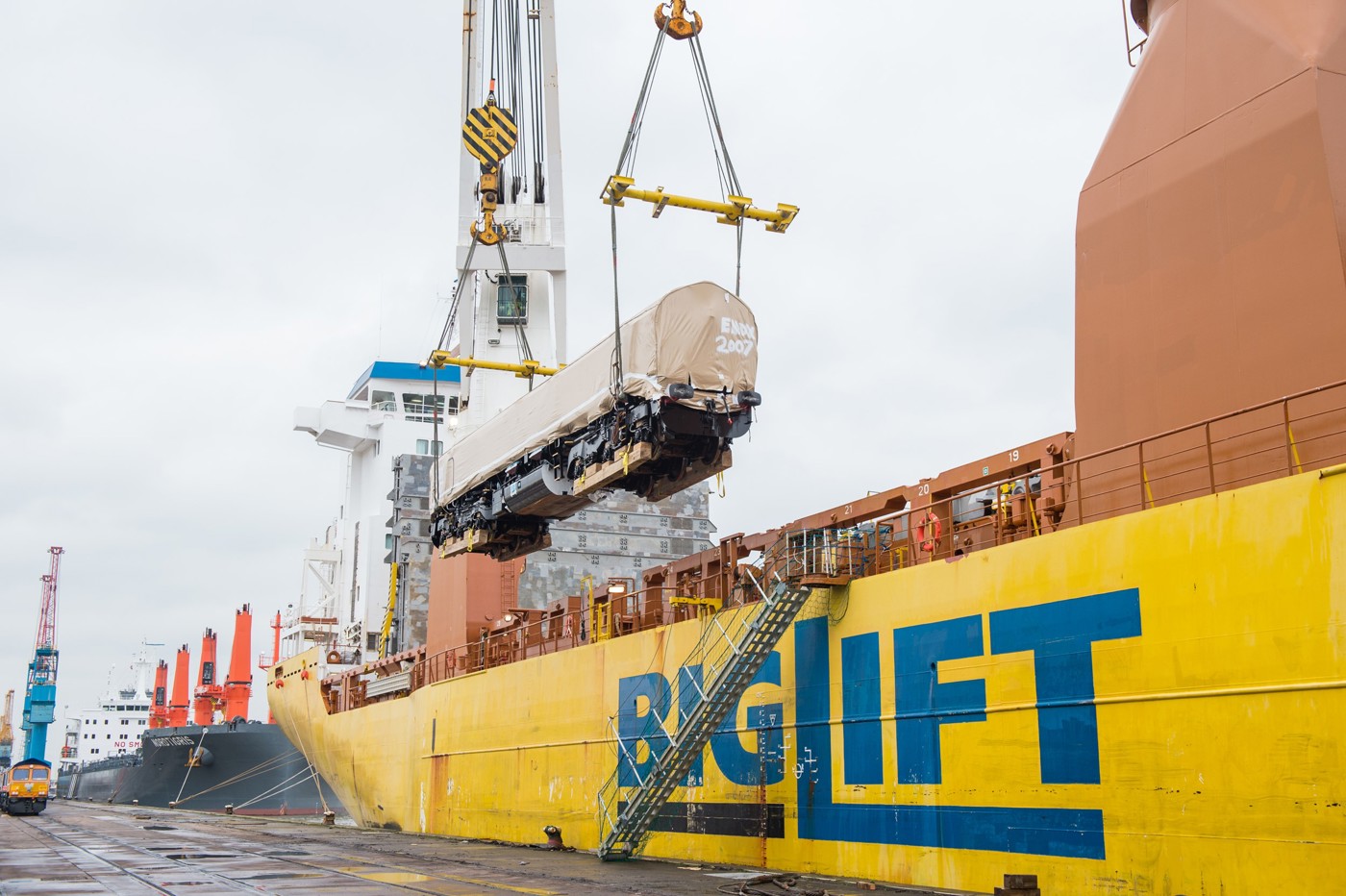

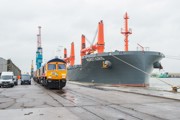
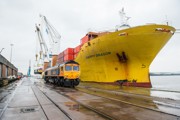

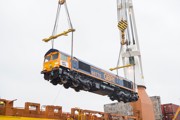
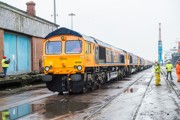
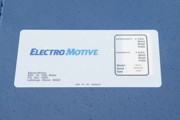
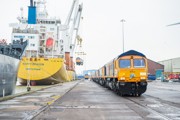

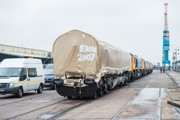
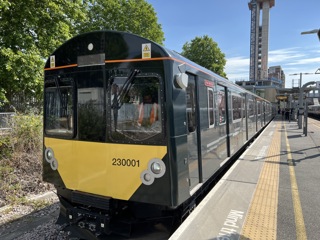
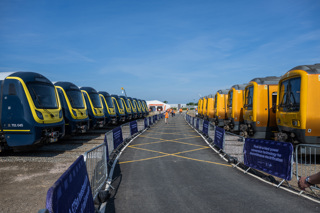
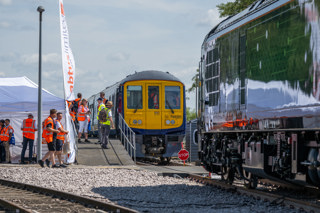
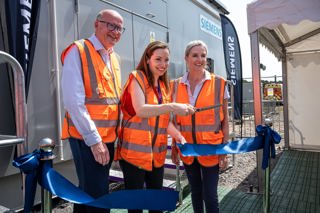
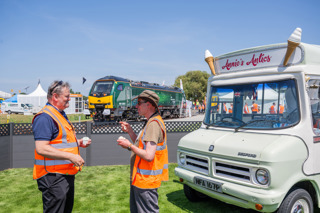











Login to comment
Comments
No comments have been made yet.